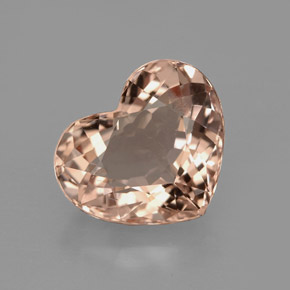The Gemstone Morganite

Morganite is the pink to purplish-pink variety of Beryl. Beryl is best known for its gem varieties Emerald and Aquamarine, but other gem forms such as Morganite are also used. Morganite was first identified in 1910, and was named the following year by George F. Kunz in honor of financier and banker J.P. (John Pierpont) Morgan. Morgan was an avid collector of gemstones.
Chemical Formula
?
Be
3Al
2Si
6O
18
All About
Besides for the extremerly rare
Red Beryl, Morganite is the least common gem form of Beryl. Its color tone is usually light pink, deeper pink stones and those with an orange tinge are more valuable. Large clear crystals of Morganite have been found, which have enabled fairly large
flawless crystals to be cut from them.
Uses
?
Morganite is a minor pink gemstone, being faceted into gemstone cuts as well as polished into
cabochons.
Treatments & Enhancements
?
Morganite is sometimes
heat treated to improve its color and remove yellowish tones. Heat treatment for Morganite can be achieved at relatively low temperatures.
Morganite Sources
?
The main sources of Morganite are Brazil, Madagascar, Afghanistan, Pakistan, and the U.S. (California, Maine).
Similar Gemstones
?
Kunzite is softer, and
Rose Quartz is usually less transparent as well as being slightly softer.
Pink Topaz is usually a deeper pink color, but otherwise can be difficult to distinguish. Pink
Tourmaline and pink
Spinel are usually darker in color.
Morganite in the Rough Photos
?